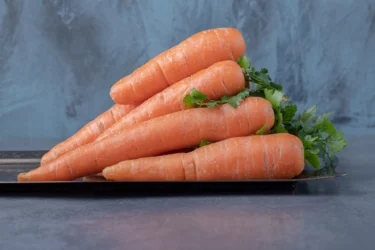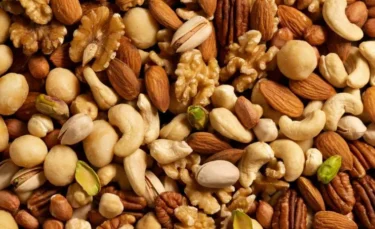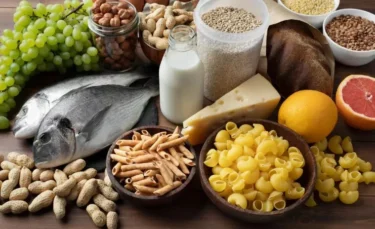Malaria is one of the most dreaded diseases. It is widespread across more than 90 countries, particularly in sub-Saharan Africa, South Asia, and regions of South America. It occurs when the malaria parasite, Plasmodium, infects the female mosquito, Anopheles1. When the malaria mosquito bites humans, within a period of 10 to 15 days, the malaria symptoms start to occur2.
Malaria symptoms vary depending on the subspecies of the Plasmodium that has infected the Anopheles mosquito. Based on the malarial parasite involved, there are four different types of malaria. Each of these types have a different severity of symptoms and needs to be treated differently.
In this blog, we will discuss in detail about malaria; its type, symptoms and treatment. These will help you better understand this infection and know when to act promptly.
This is the most common kind of malaria. It is the most widely distributed kind, found all across the globe. More than half of malaria infections found across India are of this type. It may be present in dormant stages and its presence can lead to recurrent episodes of the disease.
More often than not, it does not prove fatal but can be severely debilitating. Common symptoms of this kind of malarial disease include fever and chills, diarrhoea, severe fatigue and flu-like symptoms3.
This is one of the least common types of malaria. It is found mostly in western countries of Africa. Rarely, it is also observed in areas of Philippines, Indonesia, and Papua New Guinea. The symptoms include high fevers and shaking chills, headache, cough, diarrhoea, abdominal/joint pain, and body aches. This malaria disease can be recurring as the parasite rests in the patient’s liver and can stay dormant for years. Relapse may occur at any time during this period, with red blood cells being attacked, and the symptoms appearing again. Among all the types of malaria, this one is dangerous, if not deadly4.
This is the deadliest subtype of malaria in the world. This subspecies of the parasite is found in Africa, Southeast Asia, and South America. Unlike the above species, this species does not cause liver-stage relapses.
The patient feels the malaria symptoms like nausea, fatigue, body aches, enlarged spleen, pain in the abdomen, muscles, and joints, fever, headaches, anaemia and specific neurological symptoms like confusion and seizures. The severity of this malaria disease are such that it needs to be checked for, diagnosed and treated in time to prevent fatalities. It can cause significant harm to the brain and the nervous system. Paralysis and convulsions can also occur in this malaria.
If you are travelling to any of the above areas, take your antimalaria medications to prevent this disease5. Additionally, malaria vaccines such as RTS,S/AS01 and R21/Matrix-M are now available to protect children against P. falciparum infection2.
This is the least common kind of malaria. Fever and chills are the usual malaria symptoms. Sub-Saharan Africa and the southwest Pacific are where the malaria parasite causing this kind of malaria is common. It may persist in the bloodstream at low levels for extended periods, causing chronic infection, but it does not remain in dormant form in the liver1,6.
Various regimens are followed in the treatment of malaria, depending on the type and drug resistance in humans. Some common ones include7:
Note: Primaquine should be used with caution in G6PD-deficient patients.
While you may think it’s impossible to avoid getting bitten by a mosquito, malaria prevention methods are widely known and accepted. Here are a few8,9:
While malaria is usually a non-fatal disease, some types may be dangerous and require prompt recognition and treatment. Knowing the types of malaria and their severity allows you to act immediately if you notice any symptoms.
Depending upon the type, several antimalarial medicines are available for treatment, used in various permutations and combinations with other drugs. Yet, the cornerstone of management remains taking adequate precautions to prevent the occurrence of these infections in the first place.
Also Read: Tuberculosis: Types, Causes, Treatment and Prevention
Disclaimer: The information provided here is for educational/awareness purposes only and is not intended to be a substitute for medical treatment by a healthcare professional and should not be relied upon to diagnose or treat any medical condition. The reader should consult a registered medical practitioner to determine the appropriateness of the information and before consuming any medication. PharmEasy does not provide any guarantee or warranty (express or implied) regarding the accuracy, adequacy, completeness, legality, reliability or usefulness of the information; and disclaims any liability arising thereof.
Malaria is a protozoan disease caused by Plasmodium species and is transmitted by the female Anopheles mosquito1. It is common during the monsoon season due to a rise in mosquito breeding. The disease can lead to systemic symptoms and metabolic stress, which can suppress immunity and increase nutritional needs.
Malaria typically presents with symptoms such as cyclical fever with chills, headache, muscle aches, vomiting, and fatigue1. The Anopheles mosquito transmits the Plasmodium parasite through its bite, introducing the parasite into the bloodstream of a healthy individual. To treat malaria, there is no specific diet, but one needs to ensure good supportive nutritional care to help the body fight the disease. A diet for malaria should focus on boosting the immune system without causing harm to other organs like the kidney, liver or digestive system. In this blog, we will discuss what you should eat and what to avoid during malaria, to help manage symptoms better and reduce risk of complications.

When the patient has malaria, the body’s metabolic rate increases due to fever. This means that the body’s nutritional requirements increase and also the need to intake calories.
A high-carbohydrate diet can be good. Grains are a rich source but prefer rice over wheat and millets. Rice can be digested easily and can release energy faster. Fresh fruits and vegetables can also be great for malaria patients. According to studies3, vitamin A2 and vitamin C rich fruits and vegetables like beetroot, carrot, papaya, sweet lime, grapes, berries, lemon, orange, along with zinc, can help to boost the immunity, lower some symptoms and reduce risk of complications in patients suffering from malaria.

When you have malaria, you need to incorporate more phytonutrients into your diet that help to tackle antioxidative stress caused by an infection4. Nuts and seeds provide essential fatty acids, antioxidants, and protein. These nutrients help reduce oxidative stress and support healing. Choose unsalted, plain varieties and avoid commercially processed snacks.
I would like to share a helpful tip for dealing with malaria. Red palm oil contains antioxidants that might protect your body’s cells. It may reduce tissue damage and manage oxidative stress caused by malaria and other factors8. Always remember to consume it in moderation and consult with a healthcare professional for comprehensive malaria management.
Dr. Siddharth Gupta, B.A.M.S, M.D (Ayu)

Adequate hydration is essential to compensate for fluid loss due to vomiting and dehydration5. Oral rehydration solutions, fresh fruit juices, coconut water, and soups can be included. All water consumed should be boiled or filtered. Herbal remedies like ajwain water may help with bloating6, but should be used cautiously and not replace medical treatment.
While drinking water, make sure it is boiled or sterilized. Doctors usually recommend a daily fluid intake of at least 3 to 3.5 litres, if not more. Fluids will help in washing out the toxins from the body via urine and stools and help you get well sooner.

Protein is essential for tissue repair and immune function. Include well-cooked pulses, eggs, chicken, and dairy in your diet. If gastrointestinal symptoms are present, start with soups and broths. Some traditional foods like curd, lassi, and buttermilk is highly beneficial, but your doctor can guide you best on this.

Limit fried or greasy foods, as they can worsen nausea or diarrhoea. Small amounts of healthy fats such as omega-3s from flaxseed, fish or walnuts are beneficial. They work well in reducing inflammation in the body7. Avoid trans fats and excessive dairy cream.
According to my knowledge, the seeds of the fever nut plant might be a helpful remedy for malaria10. They possess special properties that may help fight against the malaria-causing parasites. Additionally, these seeds also have anti-inflammatory effects!
Dr. Smita Barode, B.A.M.S, M.S.
Also Read: Excellent Health Benefits Of Sugarcane Juice
Avoid very high-fiber foods like green leafy vegetables, fruits with thick skin, and whole grain cereals, which may cause bloating or are hard to digest during acute illness. Refrain from high-fat, fried, or processed foods (e.g., chips, pastries, fast food). Also, refrain from having food that is spicy or acidic, like pickles and sauces. These can cause stomach problems and heartburn. Avoid intake of coffee, tea, cocoa, cola, or any other caffeinated beverages.
It is important to work on vitamin loss by drinking electrolytes5. Eating soups, stews, or drinking fruit juices or dal water, coconut water, etc., is important. Vitamin C and A-rich foods such as papaya, beetroots, and other citrus foods, etc. with vitamin B complex are important for a malaria patient.
I believe that it’s crucial to take precautions against mosquito bites to protect yourself from malaria. Applying mosquito repellent to exposed skin might be very helpful. Additionally, using mosquito nets over beds is highly recommended, especially while sleeping9. By following these simple steps, you may significantly lower your risk of contracting malaria.
Dr. Rajeev Singh, BAMS
Also Read: 18 Best Foods to Ease Your Cough and Cold
Malaria, a parasite infection caused by mosquito bites, can adversely affect your immune system. Following the right diet during malaria can help in dealing with symptoms and avoiding risk of complications. This comprehensive list of foods to eat and avoid can help you meet the body’s unique demands during this infection. But remember, while nutritional care is essential, medical therapy must be followed as recommended by doctor. Moreover, prevention of mosquito bites through repellents, nets, and protective clothing remains the cornerstone of malaria control.
Also Read: Food for Dengue – What To Eat And What To Avoid!
Disclaimer: The information provided here is for educational/awareness purposes only and is not intended to be a substitute for medical treatment by a healthcare professional and should not be relied upon to diagnose or treat any medical condition. The reader should consult a registered medical practitioner to determine the appropriateness of the information and before consuming any medication. PharmEasy does not provide any guarantee or warranty (express or implied) regarding the accuracy, adequacy, completeness, legality, reliability or usefulness of the information; and disclaims any liability arising thereof.